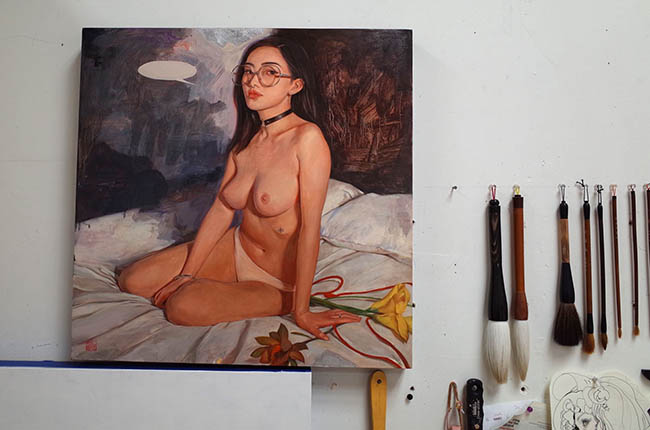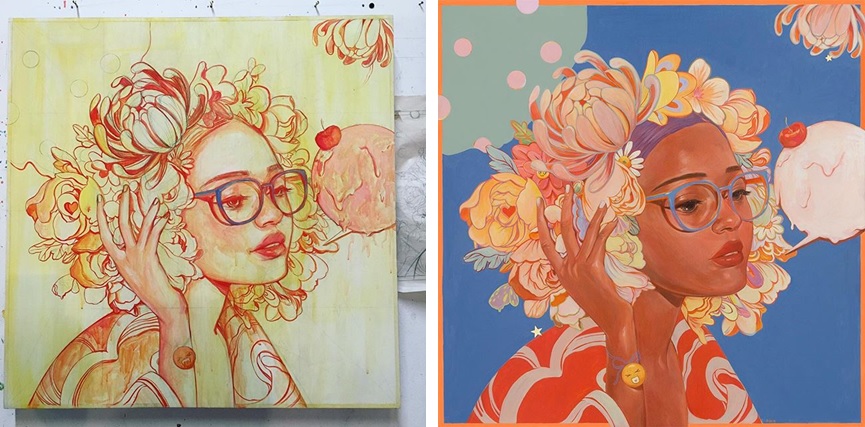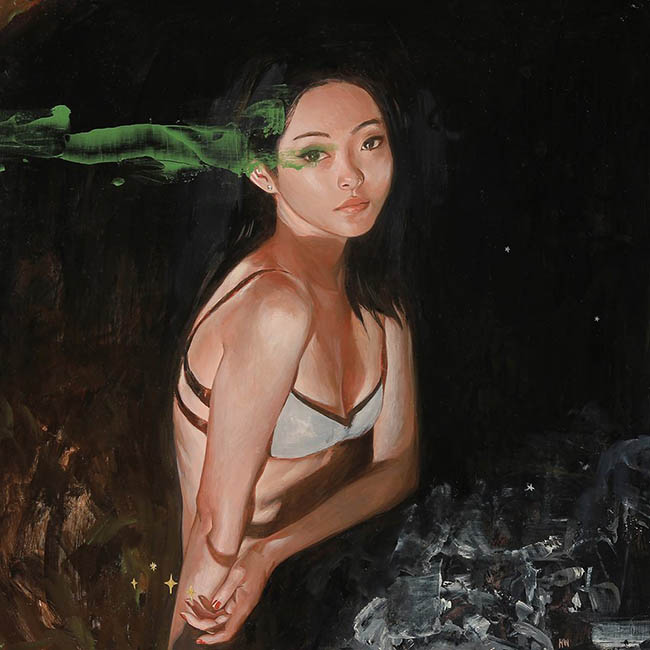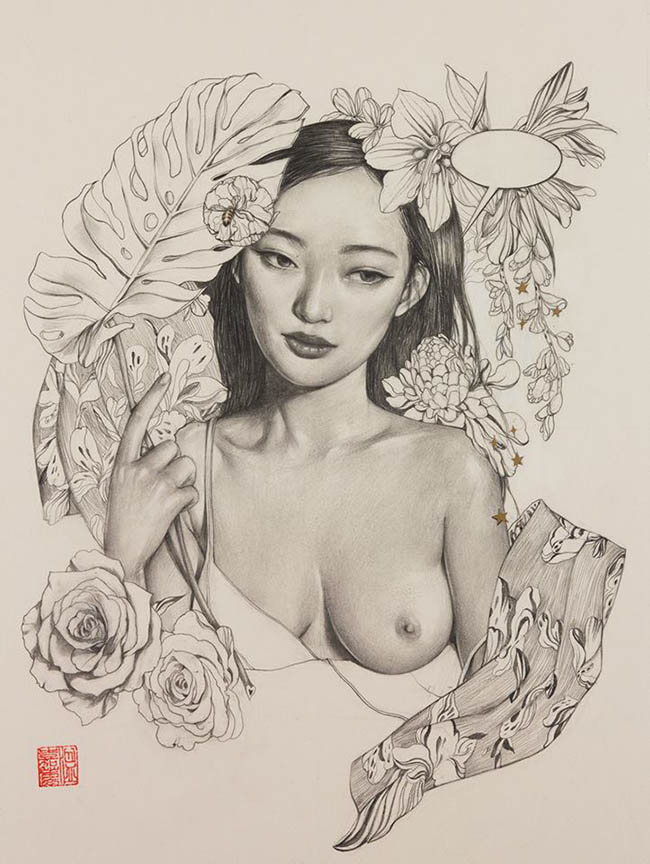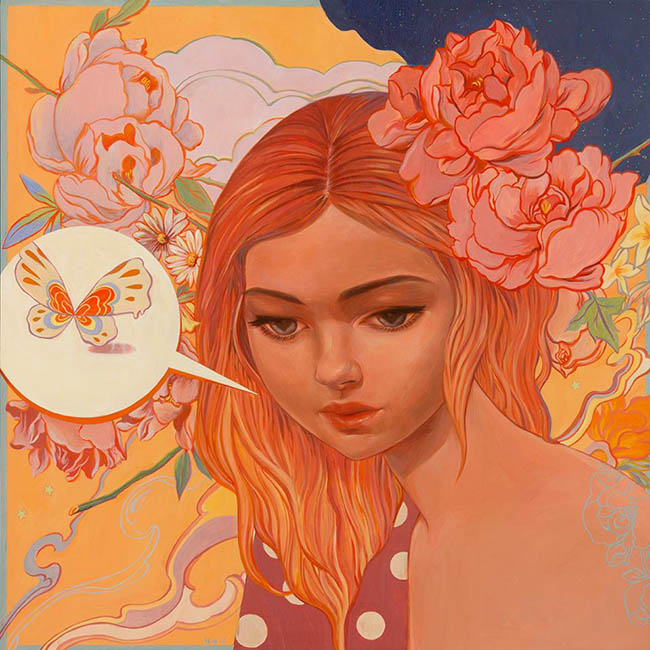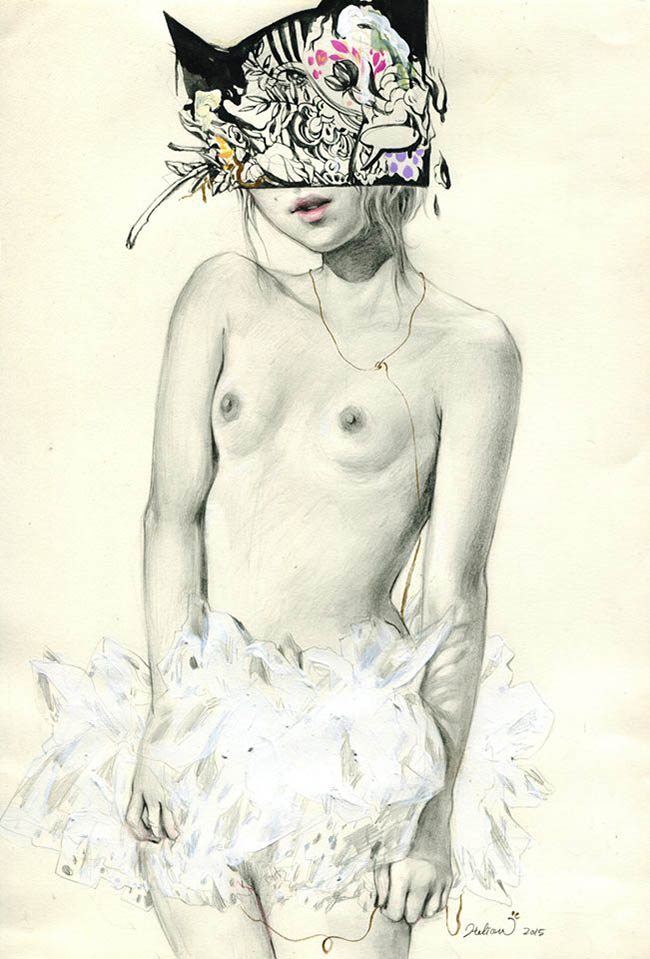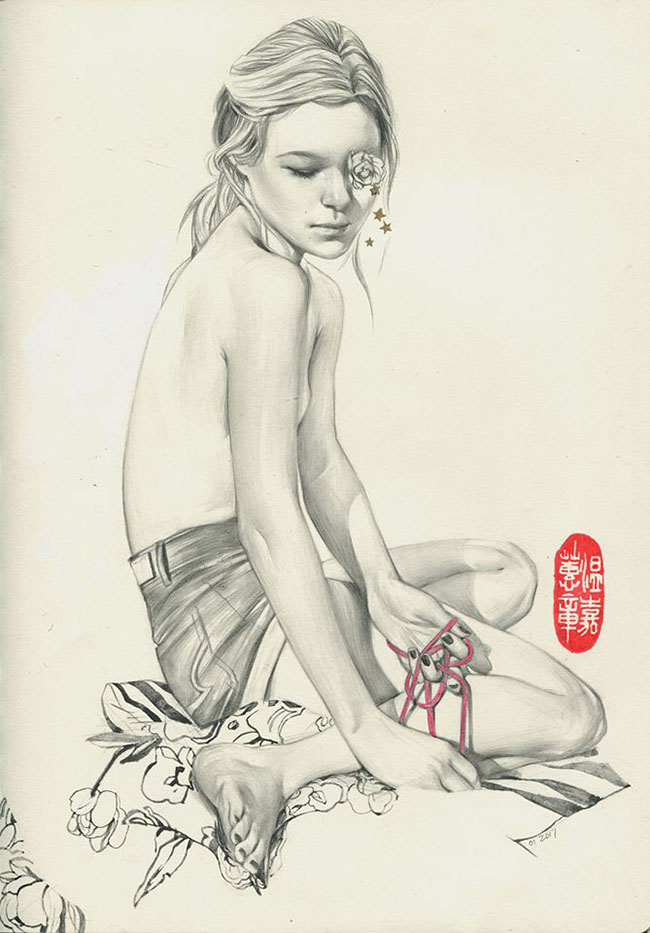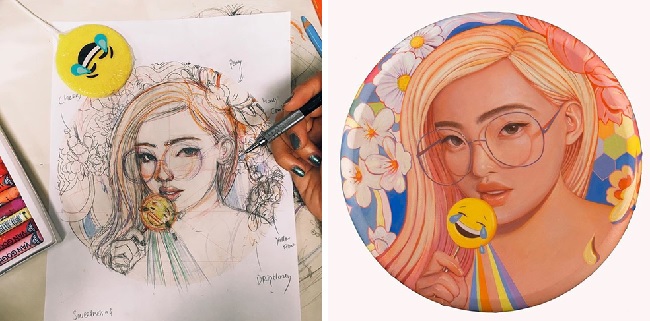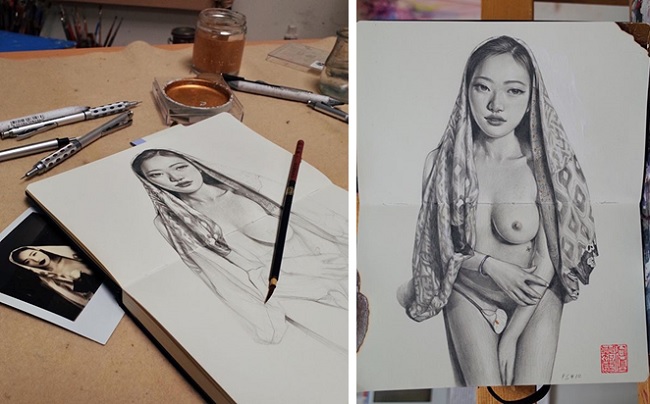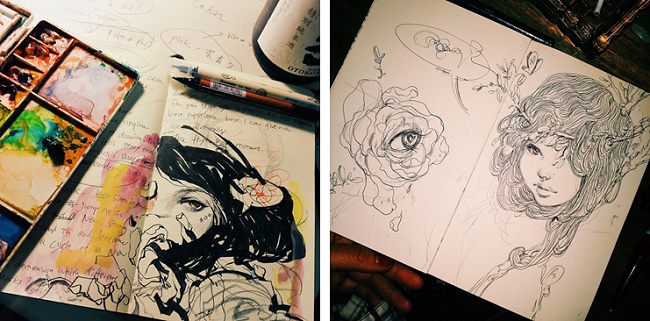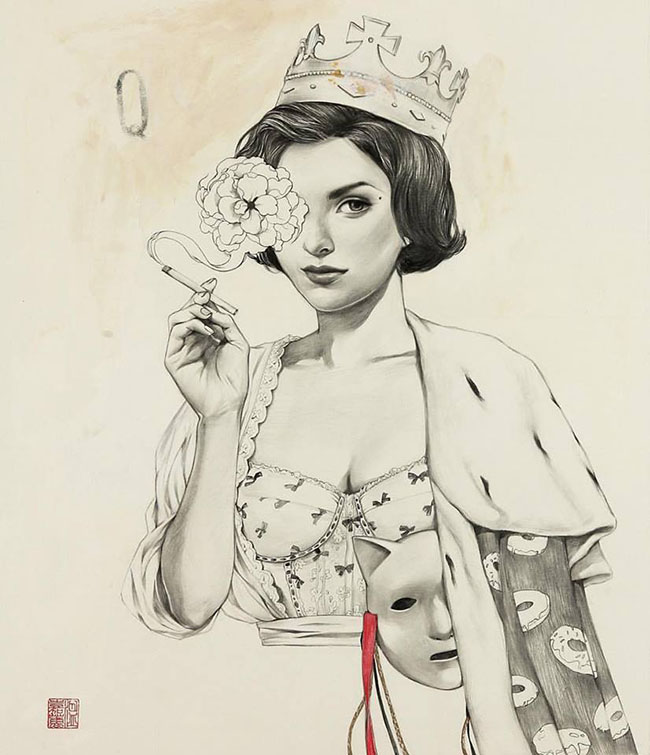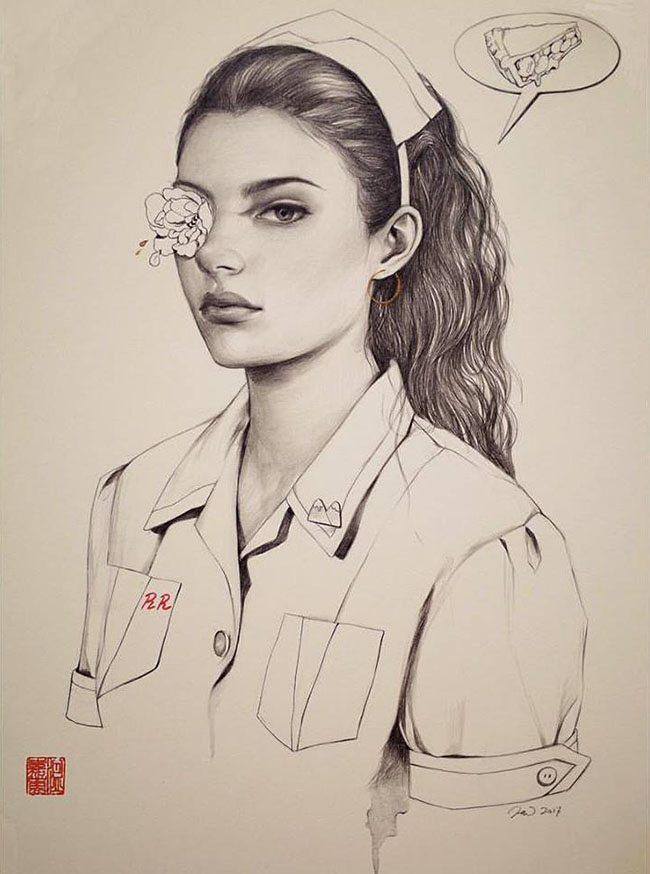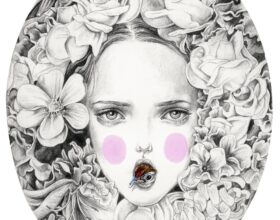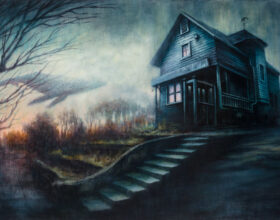The work of Chinese-American artist Helice Wen is an exercise in contrasts. Beautifully drawn or painted women, decorative floral motifs … and yet there are darker tones. Suggestions of restraint through rope, mask or corsetry contrast with subtle sensuality and hint at a deeper narrative, an outlook where the realities of the world impose themselves on idealised beauty. Whether you create your own dialogue with her work or just appreciate Helice’s technical mastery, there is no doubt that this artist has made of her contrasting environments a body of work that enthralls us all.
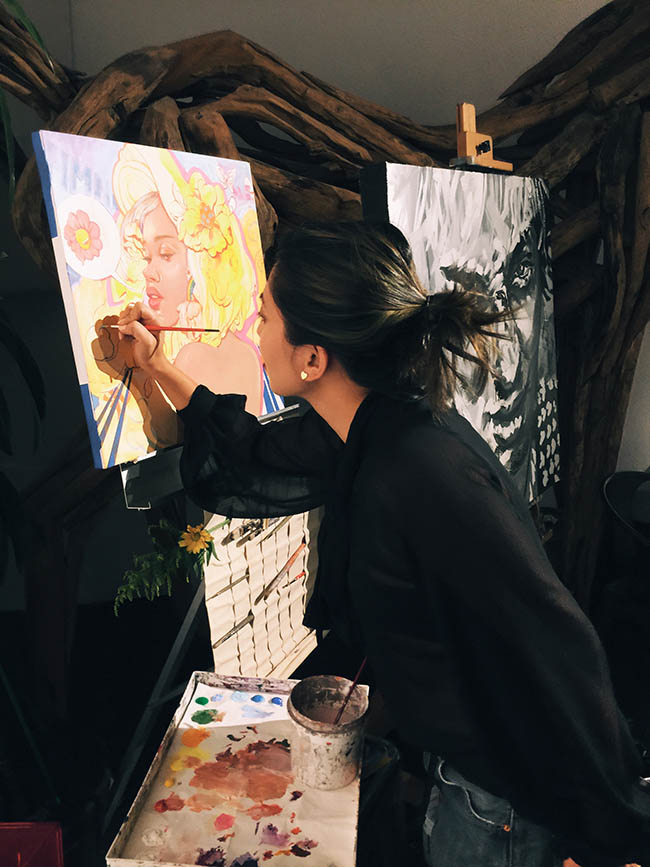
Helice Wen
Website | Facebook | Instagram | Twitter
I don’t think we can have a full appreciation to your development as an artist without understanding how much your childhood in China has influenced both you personally and your work. What were your first steps as a creative and how much of your early inspirations do you retain in your work now?
I was born in Shen Zhen, a new and modern city by the Southern sea of China. As I remember, I was a quiet kid that preferred to stay home and read rather than to go out to play with other kids. My parents bought me lots of picture books, and copying the illustrations from those books was the biggest entertainment for me! I still keep many of those books at home in China.
Speaking of those early influences, does your family have any history in the arts, and were they supportive of your choice to pursue a career as an artist?
I moved to San Francisco with my family at age 14 – it was an interesting time to start in a brand new environment, with a language I didn’t know. Both of my parents were doctors in China, and since I am a first generation immigrant, they had certain expectations of me. I was also frustrated adapting to my new life in San Francisco, so even though I had been practicing and learning art through my childhood I stopped doing it, and never thought it would be an option as a career. But realizing that’s what I had always wanted to do, I chose to go to art college after high school. My parents were supportive even though wasn’t what they wanted, and I am very thankful for that.
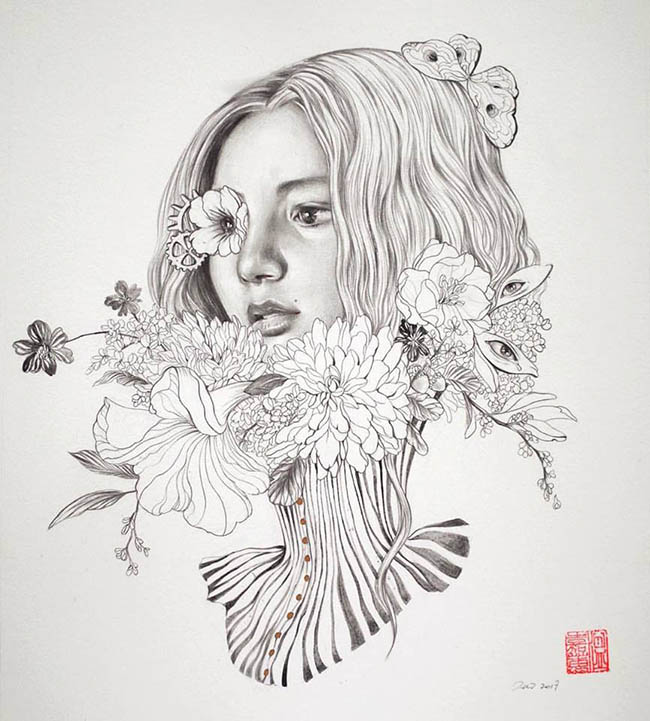
Your BFA was in Illustration, what led you decide on this field against the other BFA streams available?
I love illustration and my plan when I went to art college was to become a children’s book author and illustrator. However, during my years in school, I always took my time and did my own thing during illustration classes (never as good or as quick as my classmates), and I enjoyed the fine art and painting class more than my major classes. After I graduated, I illustrated 7 children’s books. Since then though my focus has been mainly on showing paintings in galleries, and I love the freedom it gives me to express myself.
While you have always worked with a variety of media, I have noticed that you have now started working in oils. What motivated this change and what challenges have you found moving from your illustrative and acrylic work to oils?
Drawing is more comfortable and natural to me, and somehow I associate acrylic with drawing, oil painting is a completely different world to me. However, as I become more confident with what kind of image I want to create I have come to realize that the medium just a tool and I try not to be intimidated by it.
Your work often contains a narrative with darker overtones than the ethereal expressions of your subject or the floral motifs might suggest. The appearance of Shibari – sometimes overt, sometimes less so – is a common theme. Do you have a particular interest in this, or is it a tool for you to add to the juxtaposition against the lighter elements?
The darker overtones are much like my personality; so I always want to add some comforting element in my painting to balance that out. The floral motifs are more a design decision than the meaning itself, I like patterns and want to integrate them into my painting composition. It’s the same with the Shibari; I like how the dark red (rope) makes patterns against skin. As I draw more of that, I grow more interested in the idea of joy/pain caused by physical touch, and also with the subtle suggestion of self-restriction.
Another element you have used in your work is the speech bubble, most often empty. Is this something you see viewers of your work filling with their own thoughts or words when they see those pieces, or is it perhaps where the subject is restrained from speech as they are restrained physically with the Shibari?
I look back to many drawings that I made as a child and teen – the majority of the characters come with a speech bubble. It can be sourced from Japanese Manga (like lots of Asian kids, Manga was a big influence on me), and when I put it in my paintings now I use it as part of the design. But the empty bubble is also about the unspoken mind of a person. I am never comfortable sharing my mind and thoughts verbally with other people; I guess that’s a form of self-restriction as well. Also in most cases, I don’t have a set mind of how a viewer should see and feel about the painting, leaving the speech bubble blank leaves room for the viewer to fill in their own thoughts.
Who were your inspirations that have brought you to where you are in your artistic practice? These can be film, literature, music as well as art, anything that inspires your creativity.
I still read every day, and listening to electronic music and classical music is very inspiring to me. I also love to look at photography – from masters to fashion, interesting composition, lighting and color trigger my creativity. I especially love the work of photographers Francesca Woodman and Diane Arbus; the way they record the emotion and sensibility of the physical body through the eye of a woman really inspires me.
Could you take us through your process; from the selection of subject, the decision of which media to use for a particular piece, through to the tools you use, to develop your narrative and a question that seems to vex many artists, just when do you decide a work is completed?
I usually start by writing some short sentences or a phrase in both English and Chinese, mostly about how I feel in the moment, sometimes about an interesting shape, composition or color that I have seen. Then I will transfer those ideas into rough sketches, after which I will start researching references and look through random pictures I have taken in passing. Once I have a clearer idea, I will find models for photographs. After I have all the information I need I will begin to work on the actual piece. For me the preparation and planning is more challenging, the execution comes more naturally to me. I have been working to deadlines for the past years so I have a timeline of when / how a piece is finished. For the future, I would love to do some works that have no definite deadline; I can just take my time and let it flow on itself.
Now to the future, what are you working on at the moment, and what shows do you have coming up?
My third solo show will be at September 2018 at Spoke Art, San Francisco. Until then, I reserve myself to create without time pressure. I always have so many exciting and new ideas that I have wanted to try, but have always been cut short because of deadlines. I also want to start writing my own children’s book! It is still the reason I started to draw and paint in the first place.


